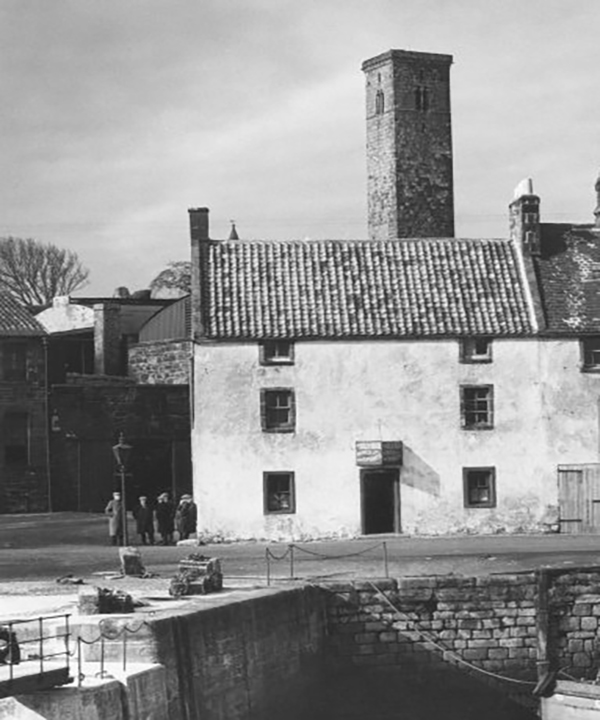
Long Pier
One of the most noticeable features of St Andrews Harbour is the long stone pier. There has been a pier on this site since the Middle Ages. The original pier was mostly made of wood. Over the centuries the wood was replaced with stone – some of it removed from the nearby ruins of St Andrews Cathedral and Castle. In about 1900 a concrete extension was added at the east end of the pier, making it easier for pleasure steamers to land passengers.

Bell Rock Tavern
The Bell Rock Tavern stood at the north end of the buildings facing St Andrews Harbour. It was originally a merchant’s house, and was converted into a pub in 1825. It remained a public house until 1938 when it was converted into a private home known as Bell Rock House. The tavern was called Bell Rock after the lighthouse of that name designed by Robert Stevenson, and completed in 1810.

Gas works
The St Andrews Gas Company was set up in 1834. Gas manufacturing began two years later, with the first gas maker (a local man named William Fowlis) having been trained in Dundee. The gas was made from coal, and was used to light street lamps, and in homes and workplaces. By the end of the 1830s more than 300 properties in St Andrews were using gas. During the early twentieth century gas consumption was still rising (despite the fact that electric power was introduced to St Andrews in 1905). The St Andrews Gas Works continued to operate until 1962.

Harbour
A short quay divides St Andrews Harbour into two areas. The Outer Harbour is more exposed and water levels here are completely dependent on the state of the tide. However, sluice gates by the quay mean that the depth of water in the Inner Harbour can be controlled. The division between the two parts of the harbour is very old and can be seen on a sixteenth-century map of St Andrews.

Royal George
In the 1920s a large tenement known as the Royal George stood on the Shorehead, facing St Andrews Harbour. This area was originally occupied by a row of warehouses. As St Andrews’ overseas trade declined in the nineteenth century, the warehouses were converted into accommodation. The resulting homes were often crowded, with whole families living in one room. In the early twentieth century the Royal George was described as ‘an example of Victorianism at its appalling worst’.

Rear of Royal George
Local government officials condemned the Royal George as a slum, and in 1935 ordered the families living there to be rehoused. The tenement was eventually demolished in 1963. Despite the lack of space, many families who lived in the Royal George remembered the tenement with affection, valuing the strong sense of community they shared with their neighbours.

Harbour Tavern
St Andrews Harbour used to have two pubs. They stood at either end of the line of eighteenth and nineteenth-century buildings directly facing the harbour. The pub at the south end was the Harbour Tavern (also known as ‘The Auld Hoose’), which occupied a whitewashed building with a tile roof. The old pub furnishings were removed in the 1950s when the property was used by the St Andrews Sailing Club. Directly behind the Harbour Tavern stood the local gas works – a reflection of the industrial nature of this area in the early twentieth century.